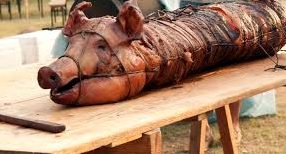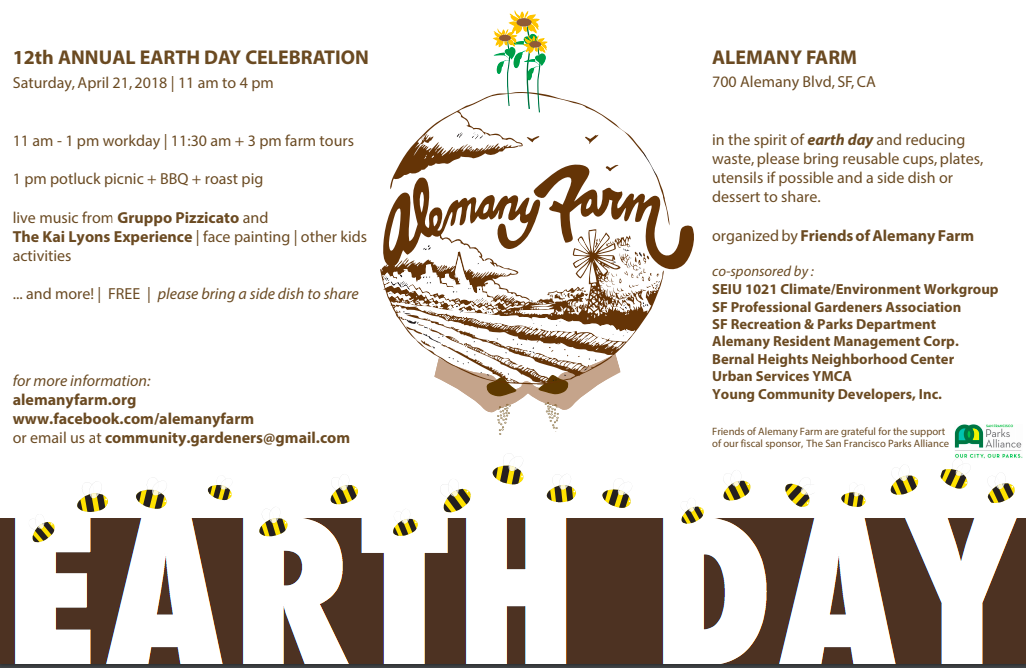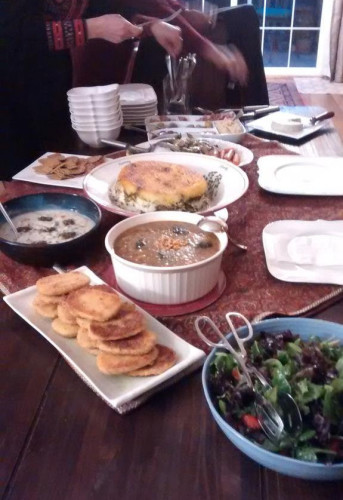– San Francisco, Shabe Yalda, Dec. 2023
It’s that time of the year again. Shabe Yalda is the Persian celebration for winter solstice, when families gather and stay up through the longest night of the year eating fruit and reading poetry. In its Zoroastrian roots, Shabe Yalda is about celebrating the return of the light, the victory of light over darkness. Like many Iranians, I only grew up celebrating the spring equinox (Norooz or Persian New Year), but Shabe Yalda has been somewhat rediscovered recently. I, too, have been putting together small celebrations or rituals to mark the return of the light for some years now.
A couple years ago, I was given the opportunity for a perfect ritual and real-world action. In November 2021, I received an email from Women’s Declaration International USA (WDI USA) titled Deck the Halls of Congress with Feminism. They aimed to raise enough money to mail a copy of the book, The Abolition of Sex: How the “Transgender” Agenda Harms Women and Girls, to each US Senator and Representative. They asked that people sponsor their respective representatives with a twelve-dollar gift that covered the purchase, packing and postage of one book. From their email:
‘Dear U.S. Signatories, As the winter solstice approaches, many cultures celebrate the return of the light after the darkest season. For feminists, the last several years have felt bleak indeed, as most of the media has pursued a blackout policy on covering our objections to “gender identity” in law and society. As a result, many legislators remain entirely unaware of the depth, breadth, and strength of our commitment to the rights of women and girls as a sex class. WHRC USA thinks it’s time to shed some light!
This winter, we will deck the halls of Congress with a feminist critique of “gender identity.” Our volunteers will send one copy of Board President Kara Dansky’s important new book, The Abolition of Sex: How the “Transgender” Agenda Harms Women and Girls, to each United States Senator and Representative, along with a personalized cover letter quoting their constituents and other supporters who understand that recognition and protection of biological sex in law is crucial.’
I liked that they linked their campaign to the winter solstice and to the idea of bringing light into darkness, because the majority of Americans have been completely in the dark as to what’s going on. Even those who are staunch supporters of “trans rights” – maybe especially those who are staunch supporters – very often have no idea of what they’re supporting. So I donated, and I threw in an extra $24 to get copies to Dianne Feinstein and Alex Padilla as well. To Pelosi, Feinstein and Padilla, I wrote:
“By replacing sex with gender identity in law and policy, California is stripping away the human rights of its most vulnerable women, like those who are homeless or in prison. In San Francisco, our public library hosted an exposition calling for violence against feminists and lesbians, the tech companies we host are censuring feminists worldwide, and I can no longer enjoy an evening out and expect that my local restaurants will have a female-only bathroom I can use. As a woman, California native and San Francisco resident, it greatly saddens me to see the erosion of women’s rights and the increased normalization of misogyny and lesbophobia in a city that was once a global leader in progressive causes. It is time for California political leaders to put women’s rights above woke points.”
WDI USA reached their funding goal, and most of the donations came from first-time donors. Women are sick of the erosion of our rights, the sidelining and censorship of our voices, the vilification of anyone who states basic facts and wants to protect the rights that were won these past decades. People in power have made it clear that they don’t care about women, but it helps to show that some of the public does care and is watching.
We certainly haven’t won yet. Notably of course, in the past two years Roe v. Wade was overturned (which, in my opinion, was not the sole doing of the right). But feminists have been pushing forward. Our concerns and our arguments are making their way into public consciousness. We don’t have a fraction of the funding of the astroturfed gender identity movement, but we are showing that grassroots activism is still possible, that in the face of heavy propaganda, censorship and deeply ingrained bias, speaking the truth can still make a difference.
While I am not personally very active, my inbox is full of calls to action, meet-ups, and local and global news of campaigns, lawsuits and even some wins (I did participate in an action for incarcerated women – and against Scott Wiener’s SB 132 – that I wrote about here). Since my little ritual in 2021, Kara Dansky has written a new book, and WDI USA has held two annual conventions: Reigniting the Women’s Liberation Movement and Accelerating the Women’s Liberation Movement, the latter in San Francisco.
San Francisco has been coasting on its gay-friendly reputation, but the only gays to which it is friendly now are of the male variety. A few years ago, a group of actual lesbians (i.e., of the female and exclusively same-sex attracted variety) was gay-bashed at the San Francisco Dyke March by other marchers. At some point in the 2010s, SF stopped being the city it is reputed to be.
But activism is still in our DNA, and to bring a convention aimed at reviving the women’s liberation movement to a city once progressive and now so captured, is powerful. I couldn’t attend, but it seems to have gone… very well? As expected, the convention drew protests from the anti-feminist pink and blue crew (one delightful protester calling for mass femicide). But unlike other venues reserved by feminists in the past, the hotel did not bow to pressure to cancel the event, and it seems that more than anything, the protesters helped bring visibility to the true nature of our conflict with them (watch Kara Dansky’s account). The women concluded the weekend in front of San Francisco City Hall with a non-violent action for lesbian rights. The same crew arrived to hurl insults at them. We keep ending up back at square 1, having to fight the same fights, but women will simply show up as long as necessary.
It’s going to take a while for the liberals and leftists who are self-righteously entrenched in gender ideology to recognize that theirs is a regressive position, and many will never take personal responsibility. But most of the public – even those who go along with pronouns and mixed-sex bathrooms without a complaint – is not entrenched at all. If we continue to speak up on the harms of gender ideology, and continue to show that there is a resistance, including one that is not rooted in conservatism, and we continue to provide opportunities to transactivists to bring public awareness to their politics and misogyny, we will get through.




